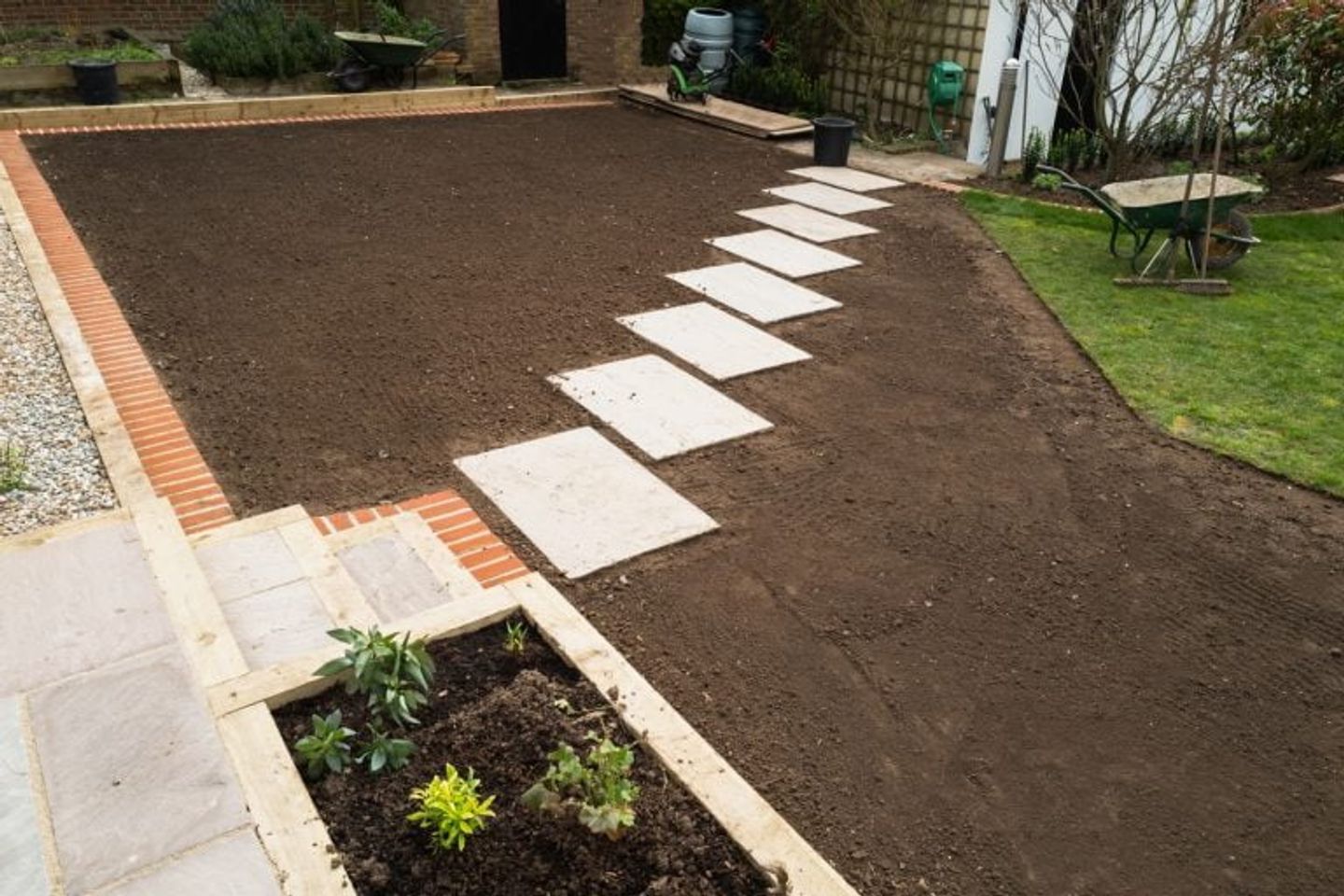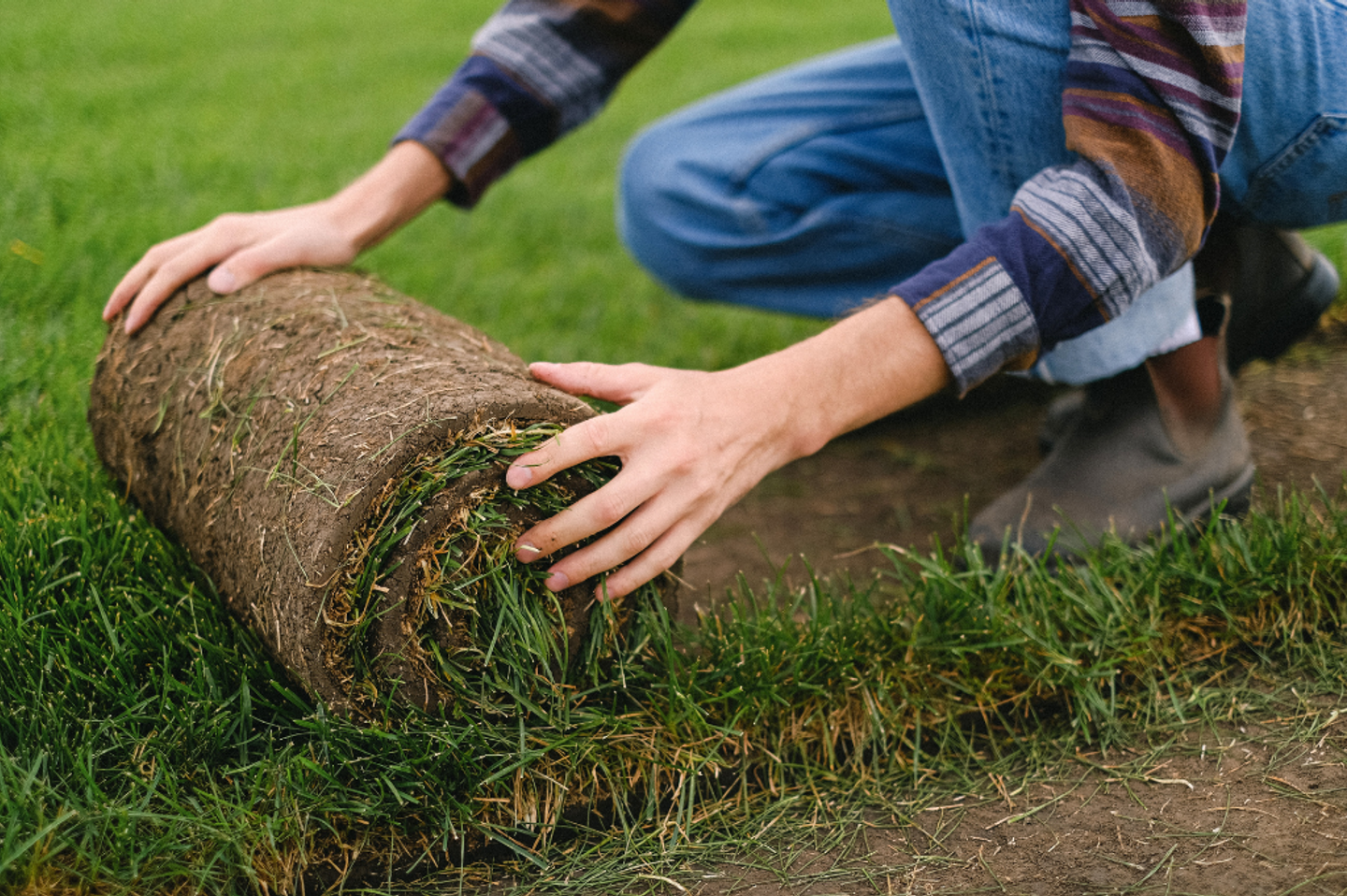We all want a garden we can be proud of & one addition that'll transform your outdoor space is laying some turf. You might not believe it but it’s not as hard to do as you might think! Whether this is your first time gardening or you just need a refresher, HSS can help. By the end of this blog you’ll know exactly how to prepare, lay and maintain your turf using our top tips so you can get the healthy, rich green lawn you've been dreaming of.
Why Choose Turf?
There are so many benefits to laying turf to your front or back garden. Not only does natural turf look great but it also produces oxygen & will absorb rainfall (which is perfect for the standard British weather). Turf is also fast to lay which is another reason that makes it challenging to beat, especially if you are on a time limit to finish your project.
How to lay turf: Your step-by-step guide
First - Order your turf
Ordering turf involves two big decisions - how much, and which type?
- Start by carefully measuring the lawn area in square metres. To measure a square or rectangular lawn, you can easily measure the length and width, multiply those numbers by 2 and calculate the area. For a circular lawn, measure the diameter and then calculate the radius by dividing this number by 2. Each turf roll is generally a square metre, 1.64 metres long and 0.61 metres wide, so working in feet and yards will cause miscalculations.
- Tell your supplier the size of the lawn, and they’ll advise how many rolls of turf you need.
- Now talk to your supplier about how you’ll be using the lawn, and they’ll advise on the best type of turf. Do you want a hard-wearing patch of grass the kids can charge around on without damage or an ornamental lawn that’s purely decorative? Will you be mowing meticulously every few days or only when you have to, and what kind of mower do you use?
- Check that the turf you are ordering complies with TGA (Turf Growers Association) standards to monitor the quality. You should always buy from trusted suppliers to get the best quality for your money.
You may dream of a golf green-style surface, but that type of turf is very high maintenance and impractical for most domestic gardens. Tough, disease-resistant turf with a mixture of ryegrass, fescue and meadow grass is an excellent all-rounder for a hard-working, low-maintenance family lawn.

(Credit: CBCK-Christine) URL: https://www.istockphoto.com/
Next - Prepare the ground
Laying turf isn’t just putting a ‘carpet’ of grass over a patch of ground. You need the grass to take root and become a living, growing lawn at speed and that won’t happen unless you first create a suitable seedbed underneath. Remember, the lawn can only be as flat and smooth as the surface it’s lying on. That means thoroughly preparing the ground, and the process is similar to the one described in our HSS blog on growing grass from seed. If you want a more straightforward and quicker route to your new lawn, try our article on laying artificial turf.
- First, weed the soil thoroughly to remove all weeds, such as couch grass and bindweed. Either do this by hand or use a non-residual weed killer that can be bought at HSS. Warning -the wrong herbicide will stay active in the soil and kill your grass so be sure to check it's the right one before buying.
- Hire an HSS rotavator and give the soil a good going-over. Dig down to a depth of 25 centimetres.
- Add plenty of well-rotted manure or other organic matter to create a soil base that holds moisture. This is especially vital if your soil is sandy. Avoid clumps of un-rotted material as they decay later. You’ll get depressions in your finished lawn when that section of soil subsides.
- Leave the soil to settle for several days — the longer, the better.
- Go back and re-weed by hand. Nature never stands still, and new plants are sure to have made themselves at home. At HSS, we have a range of garden gloves you can buy if you don't have any stored away at home.
- Create that all-important level base for your lawn by hiring one of ourwacker plate machines.
- Rake in general-purpose fertiliser, using around 70 grams per square metre then give the ground a final raking to create a fine tilth of small loose soil particles that'll be perfect for the turf to take root in.
Now - Lay the turf with ease
The first rule of laying turf is to do it immediately after delivery, ideally within 24 hours. That’s why it’s vital to have all the preparation done in advance. If you have to store your turf, keep it in the shade and remove any plastic wrapping from the pallets.
When you're ready to start laying -
- Start laying the turf along a straight edge of the lawn and work across, so that you are facing bare soil. If you are covering a large area or replacing an existing lawn,hire a turf cutter to strip old grass away.
- Next, work on a plank of wood or alternative type of board to avoid denting the newly-laid turf with your feet. The same plank of wood can help apply pressure and flatten it into place.
- After that, lay the sods with staggered joints, brickwork style, and keep the joints as close together as possible.
- To avoid overlaps, trim the turf using an edging tool to ensure clean edges & have a sharp spade with you to lift and replace sods that need adjusting.
- Keep a bucket of sandy soil with you, so you can add or remove dirt whenever necessary to keep the lawn level.
- When all the turf is laid, press it gently but firmly into place to get rid of any air pockets. Why not hire a garden rollerfrom HSS to help give you a professional finish.
- Finally, spread a topdressing layer of sandy soil or compost over the whole lawn and work it in using a stiff broom. This fills any tiny gaps and encourages the separate turves to knit together.
Turf Aftercare
Once you've laid your turf, you’ll need to maintain it to keep your garden looking fresh.
Your newly-laid turf will need time to anchor to the soil first which will take about 10 days in the summer. A good way to check this is to turn back the corner of one of the turves. If it is tough to pull and feels rooted, it is well-anchored & you'll be able to begin mowing.

(Credit: CBCK-Christine) URL: https://www.istockphoto.com/
Stay off the lawn for a few days after laying it and mow it when the grass height reaches around 2.5 to 5 centimetres (or after about 10 days if laid in the summertime). Take care not to remove more than one-third of the height each time as this promotes deep root growth. Grass that is cut too short can enable weeds to grow more easily and can even ruin the health of the lawn. If you need a lawnmower, you can hire or buy one from us either online or in your local HSS branch.
Spring and Summer Care
In dry & hot weather, especially the warm summer months, additional care and attention may be needed for your lawn. Water your new turf every five to ten days using a hose with a sprinkler attachmentto avoid walking on the grass. Water every fortnight at other times. Be careful not to overdo the watering as this can cause shallow roots and encourage weeds.
FAQs
What's the best time to lay turf? - You can lay turf at any time of year, but early-to-mid-autumn is the best time. Conditions are likely to be moist and mild, and the grass grows slowly, so not much mowing is needed. That allows the turf to take root undisturbed.
What are other benefits of creating a lawn from turf?- As you might expect, laying turf in your garden comes with many perks. Not only is it easy to do, but it also gives your garden a spruce no matter the season. The quality of turf can be just as good as grass seed, laying turf is quick and easy to install, turf doesn't wash off slopes & much more.
Is turf expensive? - The cost of turf varies. You can buy budget, mid-range or premium quality turfs so it would all depend on your budget.






















































